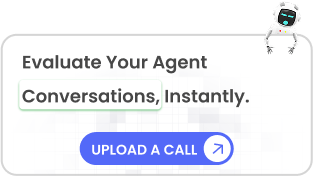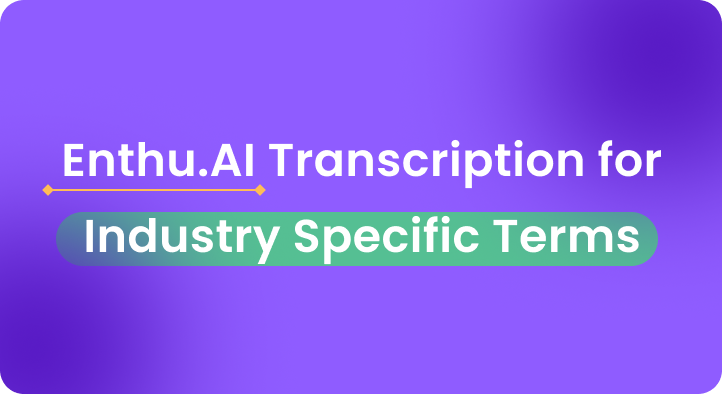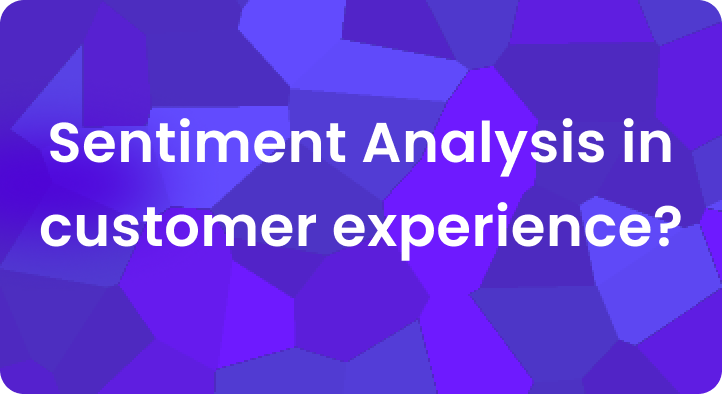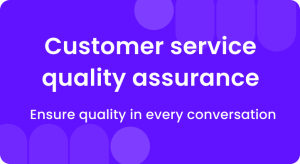Are you drowning in customer interactions but struggling to extract meaningful insights from them?
Every call, query, and complaint is key to better customer satisfaction, improved sales, and streamlined operations.
Yet, the sheer volume of conversations makes it nearly impossible to capture trends, emotions, or actionable feedback manually.
Here’s the good news: voice analytics is revolutionizing how businesses analyze, track, and improve conversational data such as KPIs and other metrics.
If you’re tired of missing opportunities hidden in conversations, this guide will walk you through everything you need to know about voice analytics.
You’ll discover what it is, how it differs from speech and text analytics, its powerful benefits, and actionable best practices to maximize its impact.
Let’s dive in.
Upload Call & Get Insights
 DOWNLOAD DUMMY FILE
DOWNLOAD DUMMY FILE
A. What is voice analytics in call centers?
Voice analytics is AI technology that analyzes customer calls to detect emotions, identify patterns, and improve agent performance.
It uses a mix of various technologies like natural language processing (NLP), conversational AI, and sentiment analysis to study voice data and gain deeper insights into customer behavior, preferences, and emotions.
Voice analytics tools work together with speech analytics and voice recognition tools to understand human language.
With its numerous features and benefits, more and more companies are investing in voice analytics technology.
According to Grand View Research, “The global speech analytics market was valued at USD 2.82 billion in 2023, and it is forecasted to grow at a compound annual growth rate (CAGR) of 15.7% from 2024 to 2030.
Voice analytics tools process audio data to identify keywords & phrases, detect emotions, and assess conversation quality.
Also, they help you gain insights into customer emotions and agent performance during the call without having to review each recording individually.
B. What’s the difference between voice analytics, speech analytics, and text analytics?
Although often used interchangeably, voice, speech, and text analytics have distinct functionalities.
Below, we explore the unique characteristics of each and how they differ in their functionality and applications.
1. Voice analytics
Voice analytics focuses on how something is spoken during a conversation, analyzing intonation, tone, pitch, tempo, rhythm, and syllable stress.
It helps to determine the emotional quotient of the speaker, identifying whether the tone reflects sarcasm, enthusiasm, frustration, or calmness.
Key uses:
- Detecting emotional intent behind spoken words.
- Enhancing customer experience by identifying emotions during interactions.
- Improving customer service by analyzing agent tone and emotional cues.
2. Speech analytics
It emphasizes what is spoken by converting spoken words into text for content analysis.
Speech analytics software uses phonetic indexing, Natural Language Processing (NLP), and Machine Learning (ML) to transcribe conversations, identify keywords, and derive meaningful customer insights.
Key uses:
- Transcribing audio conversations into searchable text.
- Extracting insights from keywords and phrases.
- Monitoring compliance and ensuring consistent messaging during customer interactions.
3. Text analytics
Text analytics works with written or digital text data to extract meaningful patterns and insights.
It employs NLP, syntax parsing, and sentiment analysis to process data from formats like emails, social media posts, or customer reviews.
Key uses:
- Analyzing text data across multiple formats and languages.
- Understanding customer sentiments from reviews and messages.
- Managing unstructured data for actionable insights.
| Feature | Voice Analytics | Speech Analytics | Text Analytics |
| Focus | Intonation, pitch, tempo, and rhythm of spoken words | Words, phrases, and context in spoken language | Textual data such as emails, social media, or reviews |
| Purpose | Identifies emotional intent or sentiment | Analyzes conversation content for insights | Extracts trends and insights from written text |
| Technology Used | Audio pattern analysis, emotional quotient evaluation | Automatic Speech Recognition (ASR), phonetic indexing | Natural Language Processing (NLP), sentiment analysis |
| Output | Emotional or sentiment-based insights | Searchable transcriptions and contextual insights | Quantified text data analysis |
| Use Cases | Customer sentiment analysis, emotional engagement | Compliance monitoring, keyword spotting, customer trends | Social media monitoring, feedback analysis, and trend detection |
| Input Type | Audio data | Audio data converted into text | Pre-written or transcribed text |
| Primary Advantage | Captures the tone and emotional layer of communication | Understands and processes the content of conversations | Analyzes structured or unstructured text effectively |
C. Voice Analytics: Transcription vs. phonetic Analysis
Voice analytics uses two primary methods to analyze conversations effectively: transcription-based analysis and phonetic analysis.
Here are some major differences between the two.
1. Phonetic analysis
Phonetic analysis bypasses text transcription and works directly with sound waves, focusing on phonemes (basic units of sound).
This approach emphasizes non-verbal communication aspects, such as tone, pitch, and emotion.
While it can detect emotional cues and provide insight into the customer’s feelings, this method has several limitations.
Phonetic analysis can be slow, processing sound data in real-time, and prone to errors due to misinterpretations of accents, background noise, or sarcasm.
It also lacks the ability to understand a conversation’s context or specific content, which limits its ability to track issues or trends critical to improving customer service and business outcomes.
2. Transcription analysis
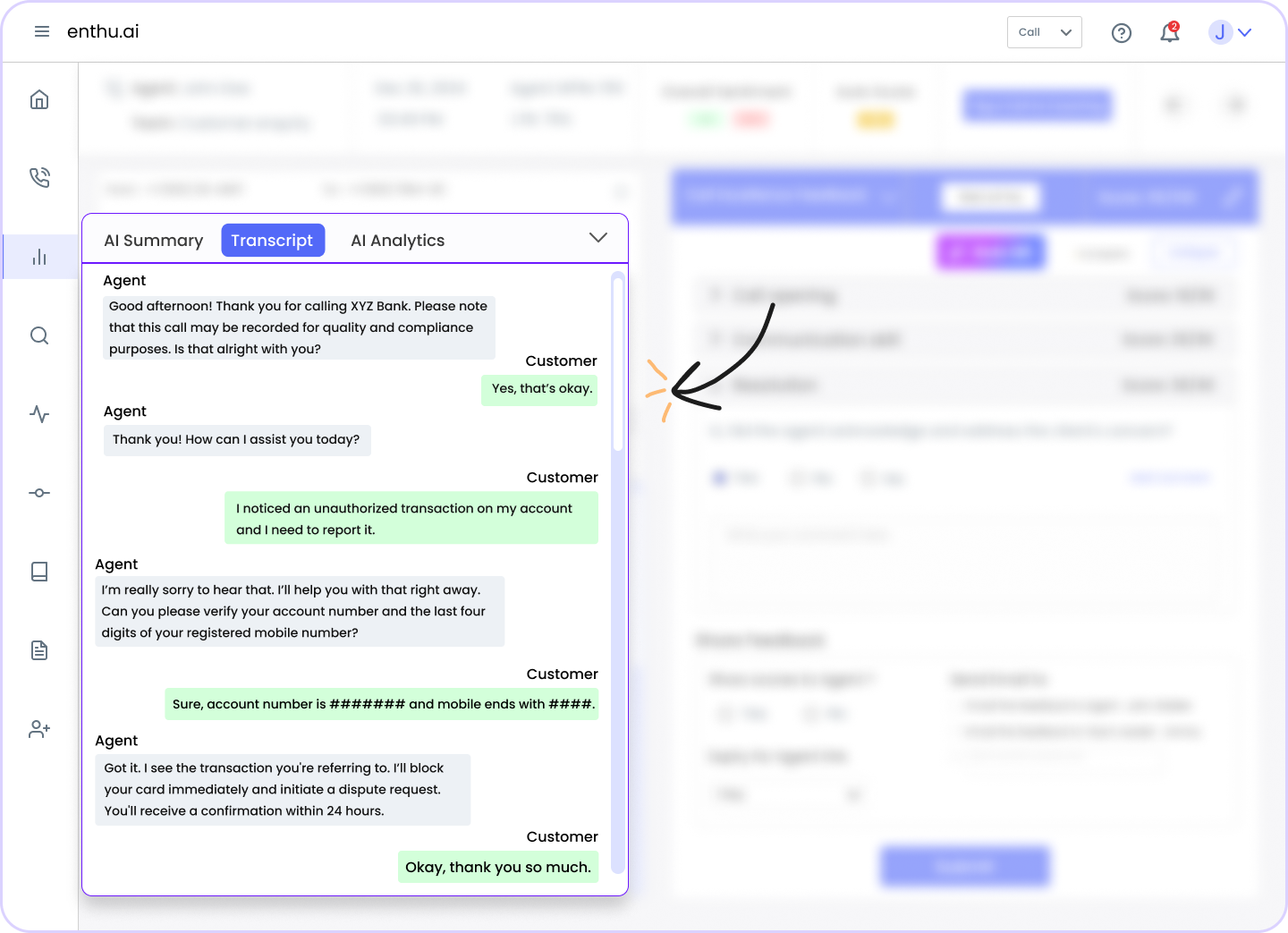
In contrast, transcription-based analysis converts spoken words into text, making analyzing and processing large volumes of data easier and more efficient.
This method not only provides an accurate record of the conversation but also enables the application of advanced technologies like Natural Language Processing (NLP), which helps identify intent, sentiment, and context.
Call transcription software improves accuracy by capturing both the emotional tone and the exact content of customer interactions, allowing businesses to monitor key trends, track compliance, and identify areas for improvement.
It is faster, more scalable, and offers deeper insights compared to phonetic analysis, making it the preferred choice for modern contact centers.
D. What are the top benefits of voice analytics for call centers?
Voice analytics is transforming contact and call centers by providing powerful tools to improve efficiency, customer satisfaction, and overall business performance.
Here’s how voice analytics can benefit call centers:
1. Cost-effective operations
Voice analytics can significantly reduce costs across various areas.
The technology delivers a powerful return on investment (ROI), with McKinsey reporting that companies that effectively leverage speech data can achieve cost savings of between 20% and 30%.
By automating tasks like call monitoring, transcription, and compliance checks, businesses reduce the need for manual labor and avoid costly mistakes.
2. Improved customer satisfaction
With real-time insights into customer sentiment, voice analytics helps agents understand and respond to emotional cues, resulting in more personalized and effective interactions.
This leads to better customer experiences and higher satisfaction rates.
In fact, 81% of customers prefer companies that offer a personalized experience, and voice analytics can ensure agents have full context during each call, tailoring their responses to meet individual needs.
3. Enhanced compliance and risk management
Voice analytics tools help monitor compliance with industry regulations by tracking sensitive information in real time.
For example, they can automatically flag risky language or alert agents when required disclosures aren’t made.
This proactive approach helps avoid penalties and legal issues.
Compliance monitoring becomes much easier, especially in industries like finance or healthcare where regulations are stringent.
4. Faster issue resolution
Voice analytics can detect signs of dissatisfaction, such as frustration or anger, early in the conversation.
This allows agents to address issues before they escalate, reducing customer churn.
Studies show that 50% of customers feel exhausted after dealing with poor support, and 73% will switch to a competitor after multiple bad experiences.
With voice analytics, you can promptly prevent such losses by acting on these insights.
5. Operational efficiency and time savings
By automating tasks like speech-to-text transcription and call monitoring, voice analytics reduces manual effort and frees up agents to focus on higher-value tasks.
This increases operational efficiency and reduces call handle times, lowering the overall cost per call.
It also helps identify areas where self-service options (like IVR menus) can be implemented, reducing the number of simple queries that require live agents.
6. Personalized customer service
Voice analytics provides agents with deeper insights into each customer’s needs, allowing them to offer personalized solutions.
This level of customization enhances customer loyalty and trust.
As 71% of customers expect personalization, voice analytics ensures agents are prepared to meet these expectations by analyzing real-time speech patterns and sentiment.
7. Better agent performance and training
With real-time feedback, voice analytics helps agents refine their skills, offering suggestions to improve their performance.
Moreover, it identifies training gaps, allowing managers to design more effective training programs.
Agents feel more confident and competent, which leads to better service and lower staff turnover.
Happier agents, who feel supported, are less likely to leave, saving on recruitment and training costs.
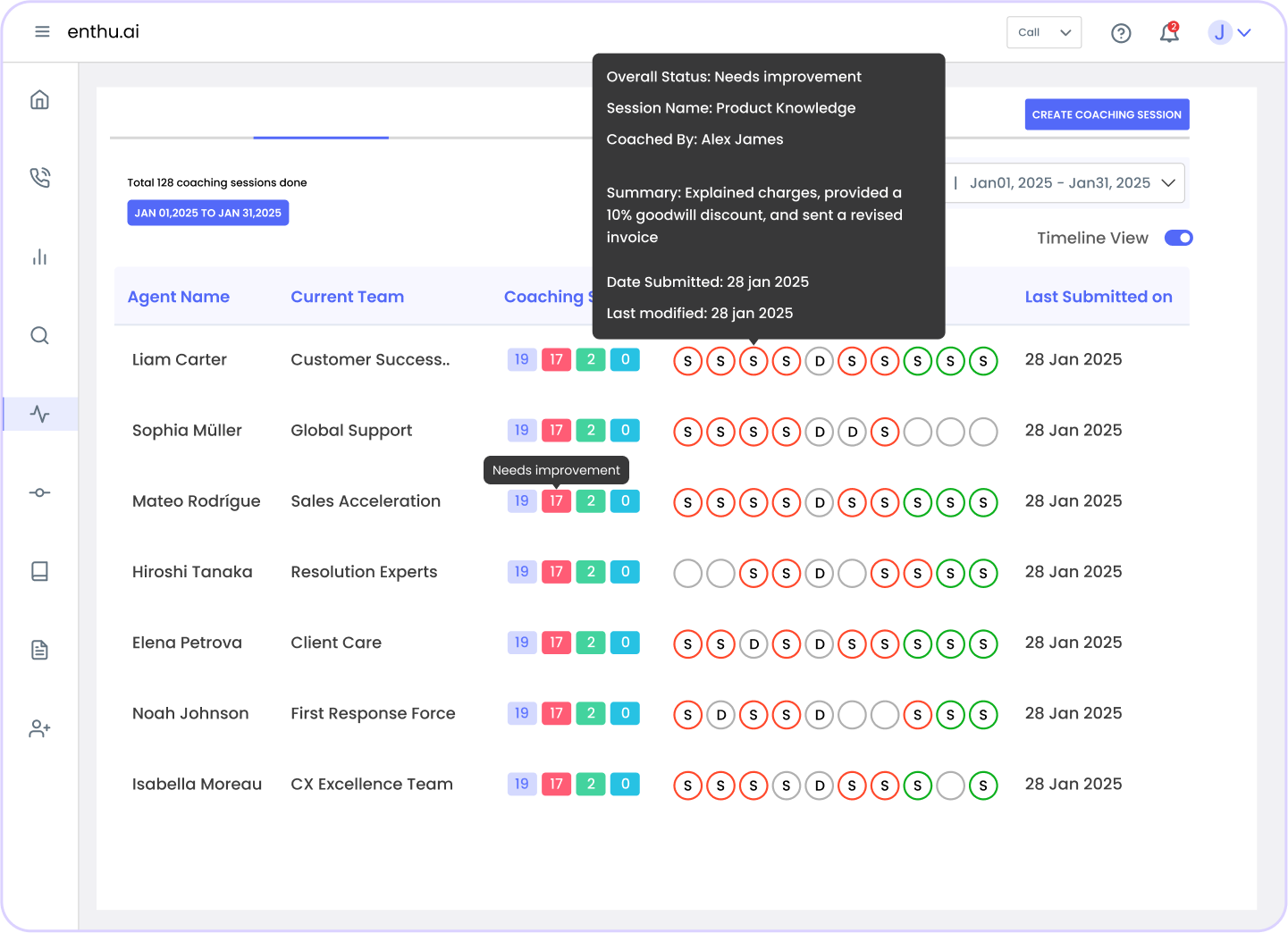
8. Identifying trends and key Insights
Voice analytics allows businesses to track recurring topics or concerns by identifying frequently mentioned keywords or phrases.
This enables proactive decision-making, like addressing common customer complaints or enhancing products based on customer feedback.
For instance, identifying high customer interest in “sustainable products” could lead to the development of a new product line.
9. Real-time feedback and coaching
Voice analytics tools provide real-time feedback & coaching to agents.
It helps them improve their performance on the spot.
By identifying areas for improvement, agents can adjust their approach during calls, leading to higher-quality interactions and better customer service.
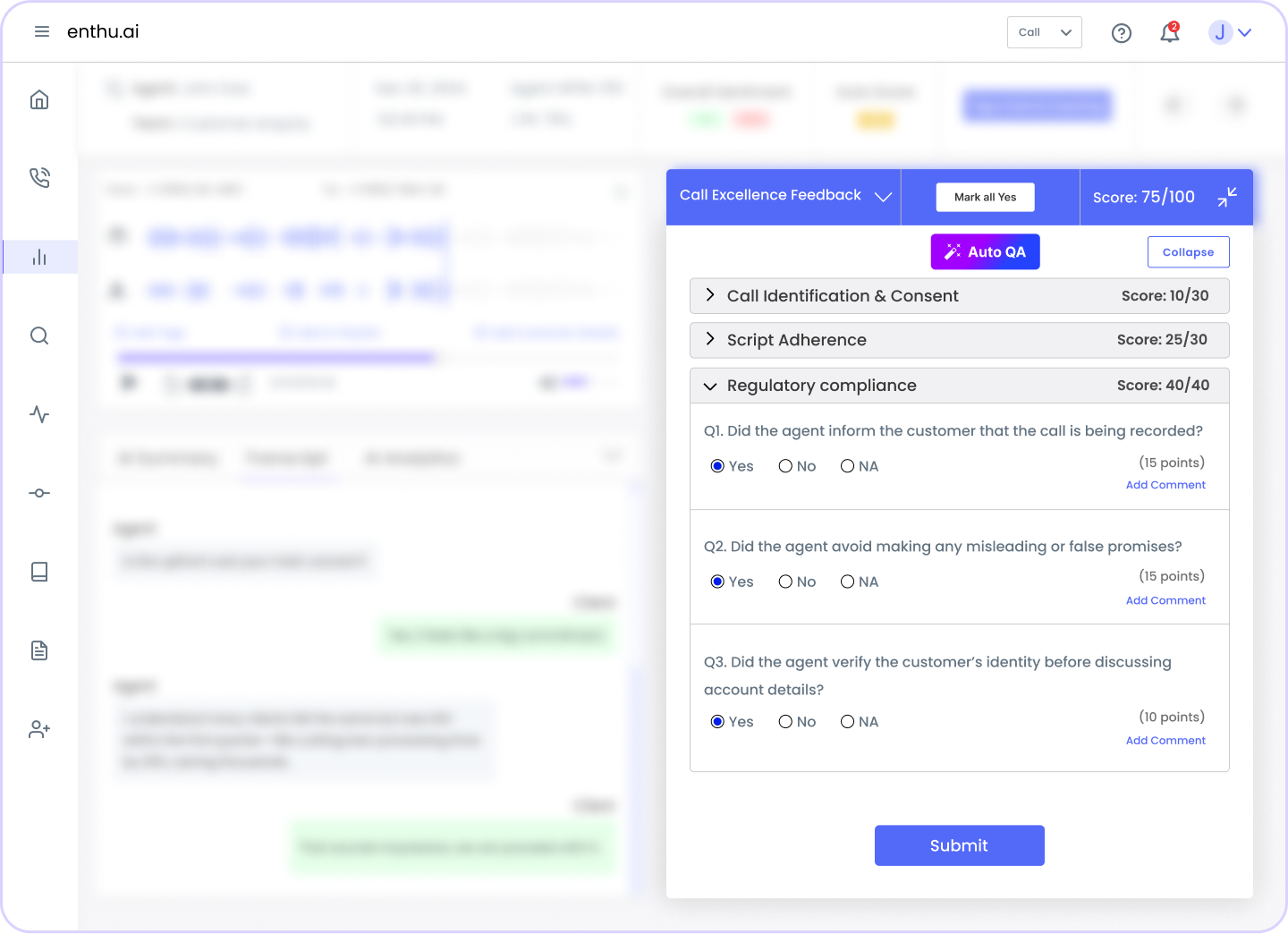
10. Increased revenue opportunities
By analyzing customer conversations, voice analytics can identify upselling or cross-selling opportunities.
Insights about customer preferences and behaviors can help agents offer relevant products or services, improving sales effectiveness and boosting revenue.
This enables higher conversion rates and more successful upsell and cross-sell opportunities.
E. What are the best practices for implementing voice analytics in call centers?
Implementing voice analytics in your call center can significantly improve customer service and overall efficiency.
Here are some simple and practical tips to ensure a successful rollout:
1. Understand your needs
Are you looking to improve customer service, boost agent performance, or ensure compliance?
Before implementing voice analytics, assess your contact center’s specific goals. Knowing your priorities helps you choose the right voice analytics tools.
2. Start with a pilot program
Test the voice analytics software in a controlled environment first.
A pilot test helps you identify any issues or challenges before full implementation.
Collect feedback from agents and managers to make necessary adjustments.
3. Choose the right tool
Select voice analytics software that provides features like real-time analytics, sentiment analysis, and AI-driven insights.
Ensure the tool integrates well with your existing systems, such as CRM and call center platforms, for smooth operations.
4. Provide training for your team
Make sure agents and managers understand how to use the voice analytics tools.
Offer training on interpreting insights, using real-time feedback, and applying data to improve customer interactions.
This ensures everyone is on the same page and can use the tools effectively.
5. Monitor performance continuously
Regularly track how well your voice analytics tools are performing.
Use key performance indicators (KPIs) to measure success, such as customer satisfaction scores and agent performance.
Make adjustments based on data and feedback to improve results over time.
6. Ensure data security
Protect sensitive customer information by implementing strong data security measures.
Use encryption and follow privacy regulations like GDPR or CCPA to keep data safe and maintain customer trust.
7. Integrate seamlessly with existing systems
Ensure the voice analytics tool works smoothly with your existing software, such as CRM or telephony systems.
This will help you consolidate all customer interaction data for better analysis and decision-making.
8. Encourage self-improvement among agents
Use voice analytics to help agents track their performance.
Real-time feedback can motivate agents to self-manage and improve their skills, leading to better customer interactions.
9. Use insights for continuous improvement
Leverage the data and insights from voice analytics to continuously improve call center operations.
Personalize coaching for agents and identify areas for process optimization to make your service more efficient and effective.
10. Stay updated
Voice analytics technology is always evolving. Stay on top of updates and new features to ensure you’re making the most out of your investment.
Regularly review and adjust your voice analytics strategy to keep up with advancements.
F. How can Enthu.AI help with real-time voice analytics in call centers?
Voice analytics has been a game-changer for contact centers, but recent advancements in AI and machine learning have evolved into an even more powerful tool.
If you’re managing any type of contact center, integrating voice and conversation analytics is no longer optional; it’s essential.
Enthu.AI is an advanced conversational intelligence software that offers AI-driven voice analytics that provide real-time insights into customer sentiment, agent performance, and overall conversation quality.
Enthu.AI’s capabilities include speech analytics, text analysis, call monitoring, sentiment detection, and quality assurance, all working together to provide you with actionable insights that help drive real results.
Ready to boost sales, elevate customer experiences, and optimize your contact center’s performance? Give Enthu.AI a try today.
Pro tip: Instead of manually reviewing 5% of calls, Enthu.ai helps QA managers analyze 100% of interactions with AI precision. Voice analytics is a game-changing tool for contact centers, unlocking deep insights into customer interactions and agent performance. By utilizing advanced technologies like sentiment analysis and AI, businesses can significantly enhance customer satisfaction, boost operational efficiency, and identify key trends for future growth. Whether it’s improving customer service, ensuring compliance, or increasing sales, voice analytics provides actionable solutions that drive real results. If you’re ready to take your contact center to the next level, embrace the power of voice analytics and see the difference it can make. Don’t let valuable insights go untapped, start leveraging this transformative tool today! 1. How does voice analytics work? Voice analytics works by converting audio calls into data and analyzing tone, pitch, tempo, and speech patterns to detect emotions and insights. It uses technologies like Natural Language Processing (NLP), sentiment analysis, and AI to identify keywords, track compliance, and measure customer sentiment in real time, helping businesses improve service and agent performance. 2. How’s voice analytics different from speech analytics? Voice analytics focuses on how something is said, tone, pitch, and emotions, while speech analytics focuses on what is said by converting spoken words into text. Voice analytics reveals emotional intent during calls, whereas speech analytics extracts insights from keywords, compliance, and conversation content. 3. What is AI in voice analysis? AI in voice analysis refers to the use of artificial intelligence technologies like machine learning and natural language processing to interpret voice data. It enables deeper insights into customer sentiment, agent performance, and conversation quality, making real-time feedback and performance improvement more efficient. How is voice analytics different from speech analytics and text analytics? Voice analytics focuses on how something is said, while speech analytics captures what is said, and text analytics processes written data. Together, they give call centers insights into tone, conversation content, and text-based feedback like reviews or messages. 5. Does it replace QA teams? Not at all. Voice analytics doesn’t replace QA, it makes their job easier. It handles the heavy lifting of call analysis, so QA teams can spend more time on coaching and agent performance. 6. Who uses voice analytics? You’ll find it in call centers, banks, insurance, healthcare, and e-commerce. Honestly, any business with tons of calls can use it to improve service, keep customers happy, and make coaching less manual.Conclusion
FAQs
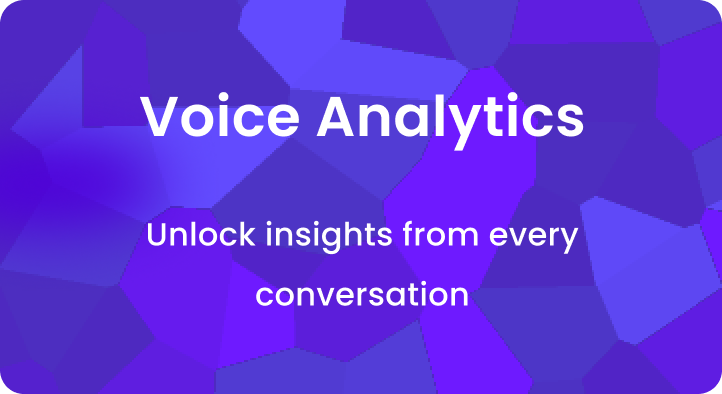
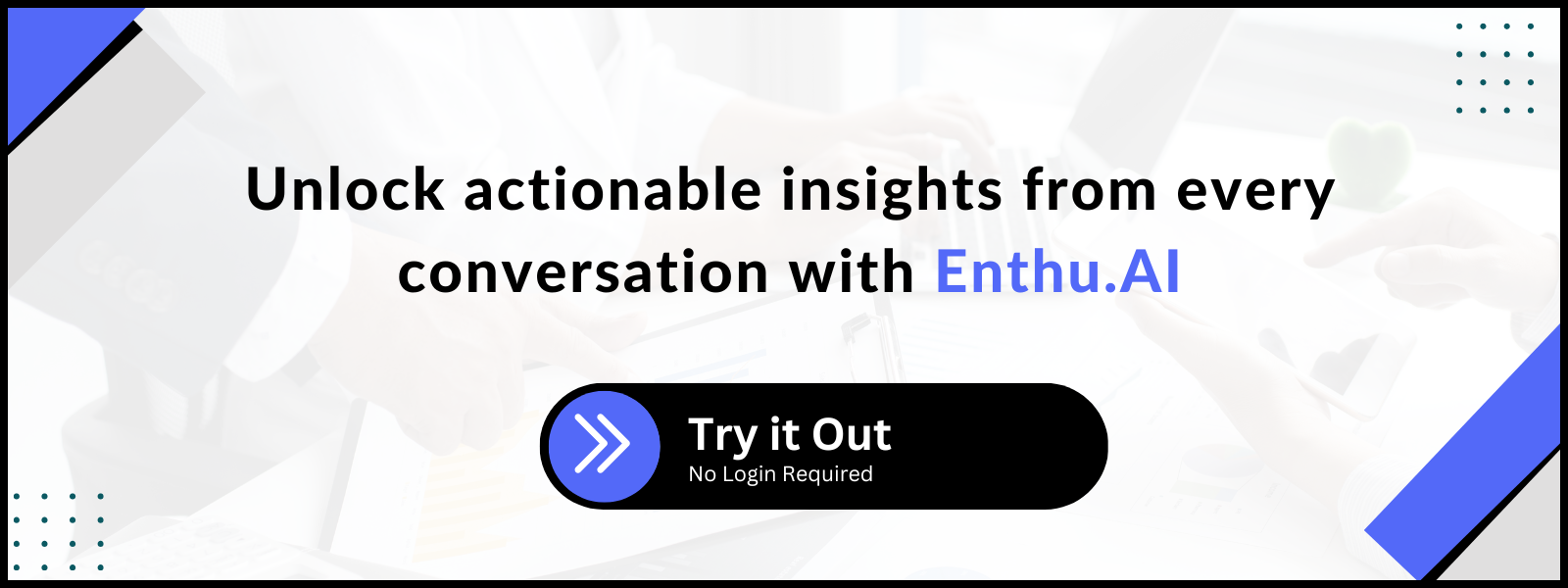


 On this page
On this page
